Welcome to the second half of my 2021 Toronto Maple Leafs prospect rankings, where I’ll countdown the team’s top five prospects currently in the system.
In the bottom half of the top-10 rankings, Matthew Knies debuted #6 ahead of Roni Hirvonen, Mikhail Abramov, Nicholas Abruzzese, and Dmitri Ovchinnikov.
As mentioned in the previous article, I see a dropoff in the tiers after #3, #6, and #9 of the top 10. The tiers matter just as much as the rankings do, but part of the fun with this exercise is debating the merits of the exact order in the comments, so have at it!
5. Topi Niemela, 5’11” RD, Karpat (Liiga)
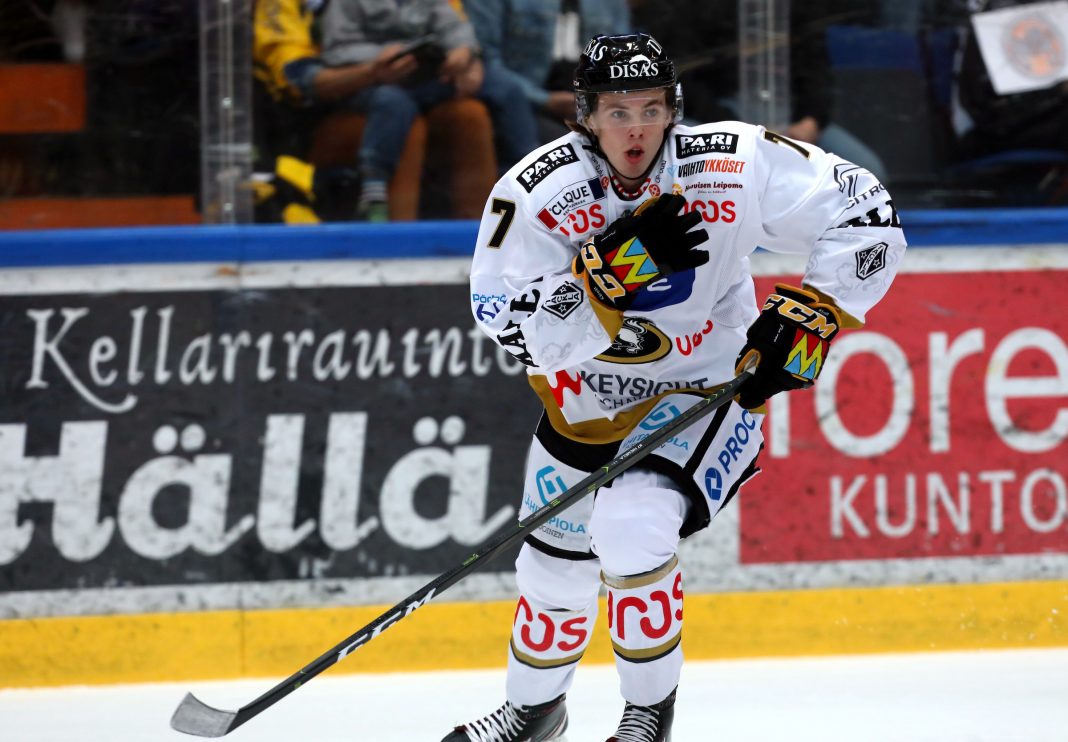
Transition Defense: 60-65
Puck Handling: 55
Playmaking: 55
Physical Play: 40-45
Niemela was one of my favourite picks on draft day, falling into Toronto’s lap in the early third round 20-30 spots lower than I expected. He’s a phenomenal skater who plays a mature style, and while he’s slightly undersized, his five-on-five defense was his calling card at draft time. Putting up eight points in seven games at the World Juniors certainly helped to showcase the offensive side of his game (being named the defenseman of the tournament as an 18-year-old did not hurt, either).
As I said in my 2020 Draft Rankings, Niemela was a pretty safe pick. He’s a strong skater with no major flaws in his game who shuts down opposing zone entries well, moves the puck effectively, and consistently impresses as a strong stick-on-stick defender. At 5’11”, he’s probably not going to play on a top penalty kill unit, but unlike Tyson Barrie, I do think there is a chance that he ends up on a second unit. His game isn’t as offense-focused as Leafs prospect Joey Duszak, for example. He’s a smart player who can hold his own defensively.
Leafs think Topi Niemela has some of the best defensive instincts in the entire draft. That from John Lilley, their director of amateur scouting.
— Justin Cuthbert (@jccuthbert) October 7, 2020
Niemela seems to do all the little things well. He’s constantly in motion in the offensive zone, where he’s able to win footraces to keep plays alive. He doesn’t try to create offense all by himself, but he’s great at pulling opposing towards him and creating space for his forwards. When one of his teammates has the puck, he excels getting open for a pass. He loves to jump up in the play and really picks his spots well.
I don’t think he was the best defenseman at the World Juniors — I’d certainly take Jamie Drysdale or Bowen Byram over him — but the Leafs have to be thrilled with how he’s looked offensively. As I said in my draft rankings, Niemela has always been a strong performer at International tournaments, but he was always more of an underrated two-way defenseman than an offensive game-breaker.
Given that the Leafs praised his defensive game on draft day rather than his offensive game, I think they agreed with me. While you never want to overrate one tournament, I do think that Niemela certainly turned some heads offensively and surprised some scouts in the process. If they re-did the draft today, I expect that Niemela would be a late first-round pick or an early second-round selection.
He reminds me a little bit of a taller Victor Mete. Even when he’s not putting up points, he’s still helping his team offensively by using his mobility to put the puck in the hands of his team’s skilled forwards. It’s certainly nice to have a prospect without major skating concerns. Given his combination of mobility and intelligence, I believe he has a good chance of becoming an NHL contributor. The Leafs should be pretty excited about him.
4. Timothy Liljegren, 6’0″ RD, Toronto (AHL)
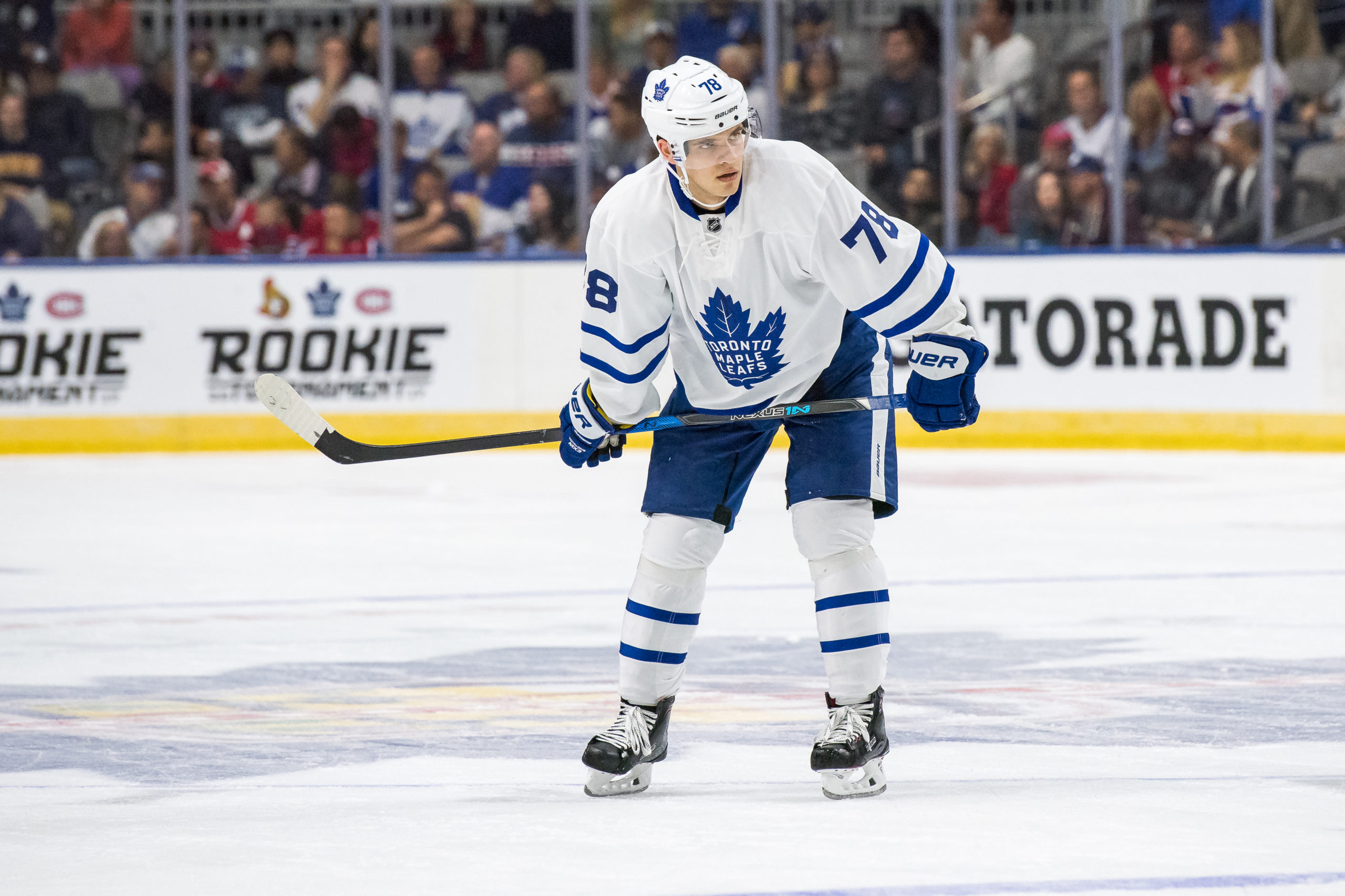
Transition Defense: 60
Puck Handling: 50-55
Playmaking: 50-55
Physical Play: 50
Liljegren is a 6’0″ right-shooting defenseman who covers plenty of ground in the neutral zone. Although he’s now played parts of four seasons with the Marlies and already boasts a little bit of NHL experience, it’s important to remember that he is still only 22. He continues to become stronger and stronger over time, and his offensive game has significantly improved over the years as well. The 2017 first-round pick continued to look like one of the best defensemen in the AHL and is on the brink of earning a permanent role at the NHL level.
Liljegren defends opposing zone entry attempts quite well, giving even fast wingers a tough time beating him to the outside. While he’s not quite big and strong enough to play on a top NHL penalty kill unit, he does receive plenty of time there with the Marlies and should be able to play on the second unit when needed. He will need to stand out more offensively if he’s going to be a top-four option, but he’s more of a two-way defenseman than a pure offensive defenseman at the AHL level.
Liljegren is now far more confident in rushing the puck up the ice compared to his first seasons. He’s always been more than capable of completing a nice stretch pass, but he was far too cautious early on in his professional career and looked like he was simply trying to fit in.
There is some serious zip on his shot, but he hasn’t scored as much as I expected him to at draft time. He is improving in that regard, though — he’s picking his spots better and jumping up into the play more. He’s never been afraid to fire off a hard one-timer, but it’s his wrist shot that really stands out to me. He needs to continue to jump up and use it more.
Unless the Leafs trade Morgan Rielly, the Leafs probably won’t have an opportunity for Liljegren on their power play next season given that Sandin is NHL ready. That puts more pressure on Liljegren’s defensive game, which was certainly not his calling card when the Leafs drafted him. However, if he’s a strong enough play-driver at five-on-five, the Leafs will find a spot for him eventually. The team might have a tough time re-signing Rielly after next season, and if so, it will be nice to have an NHL-ready puck-moving defenseman who’s ready to contribute when called on.
My hope for Liljegren is that he’s slightly above league average both offensively and defensively. He’s one of the better defensemen in the AHL and it’s important to remember that he’s still quite young. Unless you’re absolutely elite offensively, like Cale Makar or Quinn Hughes, defensemen take quite a while to develop. There simply aren’t many defensemen in the league who were born in 1999 or later and are contributing to a contending team.
Liljegren needs to bring more to the table offensively during his next NHL call-up rather than trying to be completely unnoticeable. Based on his play in the AHL last season, I expect him to do just that. If he can continue his year-over-year offensive growth, I still think he could be a top-four option, but he can be a bit clumsy at times and he’ll need to avoid the big mistakes. He could hold his own in an NHL role today, but since he’s not waiver eligible next season, the Leafs don’t necessarily have to rush here.
3. Rodion Amirov, 6’1″ LW/RW, Ufa (KHL)
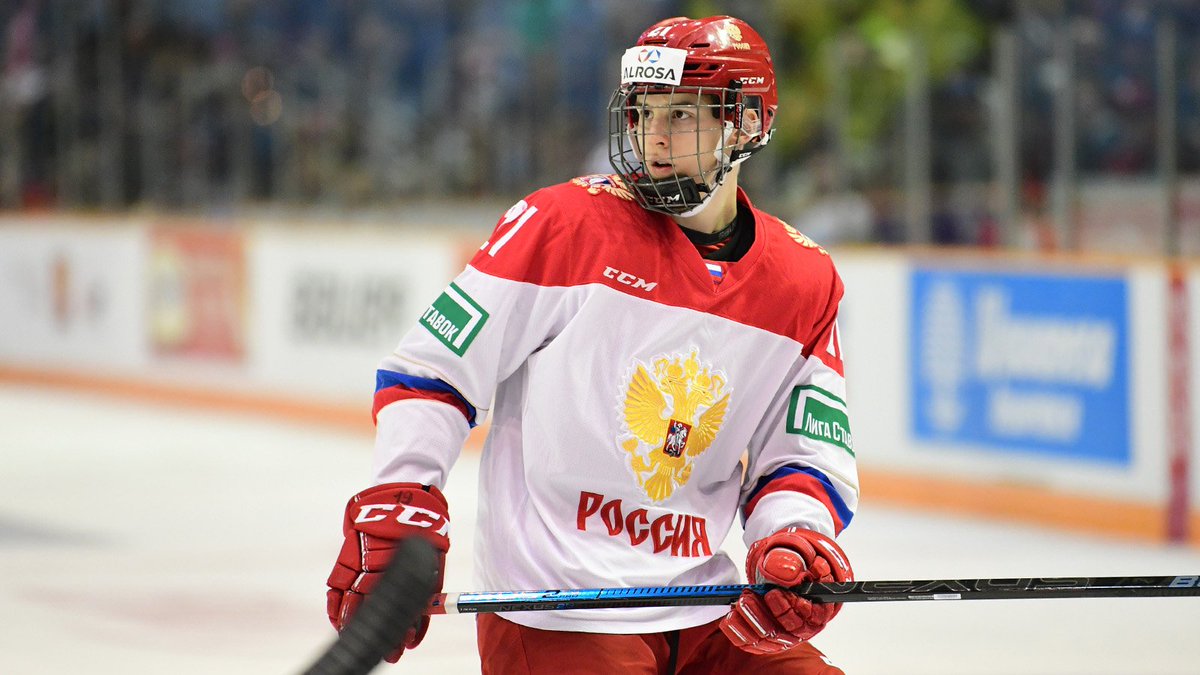
Skating: 60-65
Puck Handling: 60
Playmaking: 50
Shooting: 50-55
Physical Game: 45-50
Amirov is a skilled transition forward who scored a lacrosse-style goal just before his draft day. Due to this, some people think that he’s a “boom or bust” type of prospect who needs to score in bunches in order to make the NHL. However, this is simply not the case.
Amirov was basically the Ilya Mikheyev of his KHL team last season. His length, skating, and reach make him a strong neutral zone defender, while the majority of his offense comes off of the rush. He’s not playing on a KHL penalty kill as a teenager, but he’s always killed penalties when playing for Russia in international tournaments, and he’s going to be quite good at it at the NHL level.
At this point, Amirov is closer to the KHL equivalent of Mikheyev or Pierre Engvall than Nikita Kucherov, although he certainly carries more scoring potential than Toronto’s current checking line forwards. As Canucks fans found out with Vasili Podkolzin, earning ice time as a teenager in the KHL isn’t exactly a walk in the park.
Amirov was one of the stars of the 2019 U18 tournament, where he led Russia to a shocking upset in the semi-final against Jack Hughes and a loaded Team USA roster. After leading his team in scoring with nine points in six games, he went back to Russia and dominated their junior hockey league, leading to a 21-game stint in the KHL prior to being drafted. I have no idea why so many Leafs fans were surprised when Toronto took him 15th overall. In addition to being the best player available on my board at the time, Amirov fit the team’s needs quite well.
He doesn’t need to play on a top power-play unit to be successful, and given Toronto’s roster, he could end up as their zone entry specialist on their second unit. He’s a left-shot who tends to play on his non-one-timer side or in the middle of the 1-3-1 set-up. I’d love to see him develop a one-timer, which is currently not in his arsenal. Even if he ends up disappointing offensively (and I’m not saying that he will), his transition skill and two-way game are good enough to create plenty of offensive-zone time for his teammates.
As I said in my draft rankings, he just always seems to be one of the better players on the ice. He plays “winning hockey” — not simply an empty-calories forward who looks invisible outside of the offensive zone. There are no height concerns here, there are no speed concerns here, and it’s incredibly obvious that he’s an NHL-calibre puck carrier. Despite what you may have heard on draft day, he’s not a small offense-only winger.
Amirov shares some similarities with Kasperi Kapanen, who the Leafs traded to get the 15th overall pick in the first place. He’s able to generate individual offense off the rush at an impressive rate. Like Kapanen, he’s perfectly capable of converting on a breakaway.
As mentioned above, Amirov doesn’t have much of a one-timer and I’d like to see him become a better catch-and-release scorer in the slot. Many of his assists come from making a simple pass off of one of his billion zone entries rather than a highlight-reel Mitch Marner type of pass. I don’t think he’s as one-dimensional as Kapanen — I believe he passes and plays off of his teammates better — but if I’m going to nitpick his offensive game, I’d like to see more pass attempts into high-danger areas.
Let’s put it this way: His transition offense is better than his “half-court” offense. He’s going to get minutes during three-on-three overtime, where his speed and puck-carrying ability make him lethal in that type of space. He’s pretty wicked in the shootout — he’s also more than capable of beating goalies off the rush with his wrist shot — but he needs to become a little bit better in the slot. He’s a bit too shot-focused at times, and his vision is just okay.
Darryl Belfry, who is Toronto’s highly-regarded skills coach, could really help this player’s development. Belfry can’t turn a 5’9″ player into a 6’0″ player — and he probably can’t turn a horrendous skater into an elite one — but he can certainly help a player like Amirov to round out his offensive game in the slot. He needs to arrive in the slot at the right time and also get his shot off quicker.
Like most young players, Amirov needs to get a little bit stronger, and his game will take another step forward once he does just that. His transition game does remind me of William Nylander, with an extra two inches of height to help him defensively. Nylander has developed into a strong net-front scorer, and while Amirov isn’t quite the same playmaker as Nylander was at this stage, he’ll be able to gain the zone, back defenders up, and create space for Toronto’s high-end scorers. Players like Auston Matthews don’t always need a highlight-reel assist in order to score; if you can back defenders up off the rush and create space, he can do the rest.
Rodion Amirov picks up an assist pic.twitter.com/PxK6RIOgOB
— Kevin Papetti (@KPapetti) August 10, 2021
Amirov plays both wings equally well. His well-rounded skill set should make him a swiss-army knife at the NHL level — he can play in all situations, and his two-way potential could make him a good fit to match up against opposing top lines. You could also use him like Kapanen and ask him to drive the third-line with his transition game. Having proven that he’s a top player when playing against his own age group, Amirov is already playing in the top nine of a good KHL team.
He could end up being comparable to Kasperi Kapanen rather than a borderline star, but even then, he’ll provide plenty of value to the Leafs on an entry-level contract. Ilya Mikheyev would be a pretty damn good player if he had more finishing talent. Maybe Amirov can be just that.
A force to be reckoned with in the game against Sweden at the World Juniors, he certainly looked like a future 50+ point scorer way back at the U18 tournament. We’ll see what happens from a points perspective, but at the very least, he’ll be a top-nine forward who can match up against anyone. In my view, Amirov plays winning hockey.
2. Rasmus Sandin, 5’11” LD, Toronto (NHL)
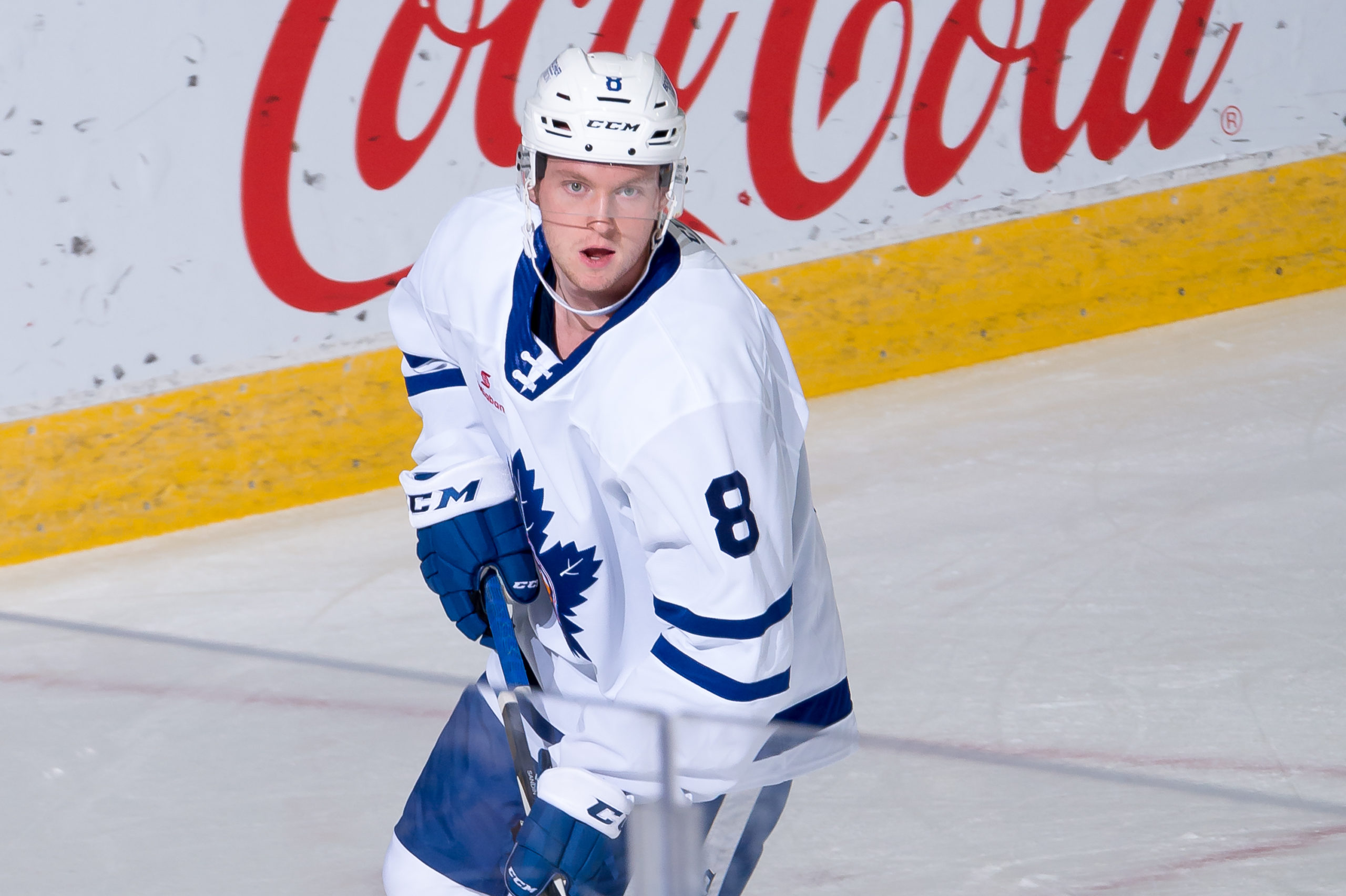
Transition Defense: 45
Puck Handling: 60
Playmaking: 60-65
Physical Play: 55
Good things usually happen when Rasmus Sandin has the puck. He sees the ice extremely well and racked up plenty of points in the OHL, AHL, and World Juniors as a result. You want him on the ice if you’re down a goal in the final minutes. He’s also a complete lock to help an NHL powerplay. While I’m not a huge fan of using point totals to evaluate defensemen, if Sandin ends up on Toronto’s top power-play unit, a few 50+ point seasons are certainly possible.
Sandin is remarkably calm under pressure and uses this poise to seamlessly spin away from opposing forecheckers. He’s effective at drawing opposing players towards him, creating extra space for his teammates, and threading the needle to find them with a tape-to-tape pass. While he’s not an A+ skater in a straight line, he’s strong on the puck and able to rush the puck up the ice with confidence as a result.
Sandin is strong for his size — he also doesn’t back down physically in the corners or in front of the net — but he’s still just 5’11” and doesn’t quite have the reach to be a great stick-on-stick defender like T.J. Brodie. While his strength and intelligence will give him a chance to play on the second unit of the penalty kill, his size will put him behind players like Brodie, Jake Muzzin, and Justin Holl on that depth chart.
There’s little to no doubt that Sandin will be a good puck-mover at the NHL level, so his five-on-five defense will determine just how valuable he is. His strength and competitiveness will help him to avoid being as weak defensively as Tyson Barrie, but given that he’s 5’11” and not quite a great skater, he’ll have to prove himself against top NHL forwards. The Kasperi Kapanen’s of the world can beat him off the rush.
Jared Spurgeon, two inches shorter than Sandin, is a good but not elite skater. That’s obviously close to the absolute best-case scenario for Sandin — Spurgeon is one of the best defensemen in the game — but his vision and strength should make him a strong contributor at the NHL level.
While Sandin will get beat outside by elite skaters from time to time, he’s the type of puck mover who constantly creates extra time and space for his teammates and puts them in a position to succeed. A top player for Sweden for years, he didn’t look out of place in the NHL as a teenager. He’s one of the better defense prospects in the league, but he’ll need to prove himself defensively at the NHL level if he wants to be a $6 million player (in current-day dollars) rather than a $4 million player.
1. Nick Robertson, 5’9″ LW, Toronto (AHL)

Skating: 50-55
Puck Handling: 65
Playmaking: 55
Physical Play: 40-45
Shooting: 65
Robertson became one of the crown jewels of this system after scoring 55 goals in 46 games in his final OHL season, a pace that’s pretty much unheard of for an 18-year old. An abundance of good NHL players have come out of the OHL over the past decade, but not one player matched his goal-per-game production. Given that he was just days away from the 2019 draft-eligibility cutoff, it’s remarkable that he was able to impress the organization enough to get himself into four games in Toronto’s series against Columbus.
He looked like one of the best players at the World Juniors, where he would have dominated if he returned for 2021. His goal-scoring ability will always be his calling card — he offers both a high-end wrist shot and a great one-timer. His catch-and-shoot ability makes him a great fit next to high-end playmakers, and he carries enough speed and elusiveness to effectively create his own scoring chances as well. He’s not just an empty calories scorer, either — he’s relentless on the puck and wins more puck battles than you’d expect for a player of his size. The Marlies used him in all situations last season, hinting at the possibility that he could potentially kill penalties at the NHL level down the road.
Robertson is an underrated passer, but he was very shot-happy in the OHL, where he averaged just over 5.5 shots per game. Playing with the pass-first Semyon Der Arguchintsev was a big reason for that. Given the quality of his shot, it made sense for Robertson to be shooting as much as possible. He effectively uses his smaller stature to his advantage by making it tough for defenders to tie up his stick in the slot. He also gets his shot off incredibly quickly.
Robertson is going to score plenty of goals. His one-timer will be a focal point on the power play, where his ability to get his shot off quickly could make him a great fit in the middle of the 1-3-1 set-up. If he’s playing across from Mitch Marner or William Nylander at 5-on-5, he’s going to be able to capitalize on their ability to push defenders back and create space. With his lethal shot, expect multiple 25+ goal seasons.
There are some minor concerns with Robertson’s profile. While they won’t hold him back from reaching the NHL level, it does put him a step behind where someone like William Nylander was when he was a prospect. First, while he’s a good transition player and playmaker, he’s probably not quite at the same level as Marner or Nylander. Second, he doesn’t generate quite as many takeaways as those two do. At 5’9″, he covers less ground with his reach.
Of course, Robertson does offer some playmaking and takeaway talent in his own right, but he’s not quite elite in either area. While players like Marner and Rodion Amirov are excellent neutral zone defenders thanks to their skating and positioning, Robertson relies more on simply out-working his opponents, which doesn’t always translate seamlessly against bigger and stronger players.
His shot, craftiness, and competitiveness will make him a dangerous scorer at the NHL level. It may take him a couple of years to be a strong play-driver — particularly defensively — but I’ll happily bet on a player with his work ethic any day of the week. Despite his shoot-first approach, I think he’s a better playmaker than someone like Amirov, although you do want him shooting as much as possible.
Robertson’s ability to change directions quickly makes him difficult to defend. His work ethic is bound to make him a fan favourite as well as the fact that he’s quite strong for a player of his size and does not shy away from physical battles. He was already one of the most dangerous scorers on the Marlies at the age of 19, and while I expect him to start next season at the AHL level, he could push for an NHL job by midseason.
Robertson is clearly one of the better players in his age group. I love his intensity and work ethic. With a shooting ability that provides him with considerable upside, he has a bright future as a top-six winger.


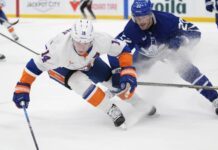







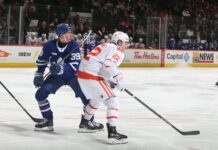












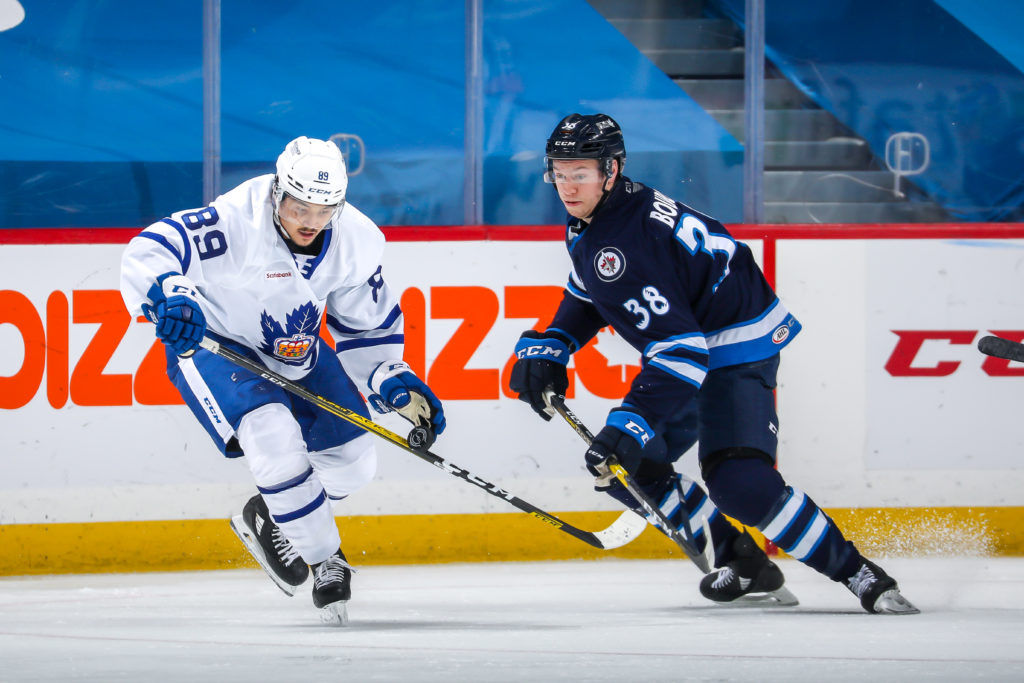
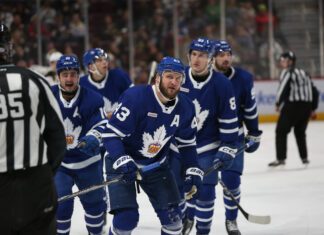






![Craig Berube Post Game, Leafs 6 vs. Sabres 3: “Our team played really hard in front of [Murray]… They were dialed in for him” Craig Berube, Toronto Maple Leafs head coach](https://mapleleafshotstove.com/wp-content/uploads/2024/12/berube-leafs-tor-pg-100x70.jpg)

